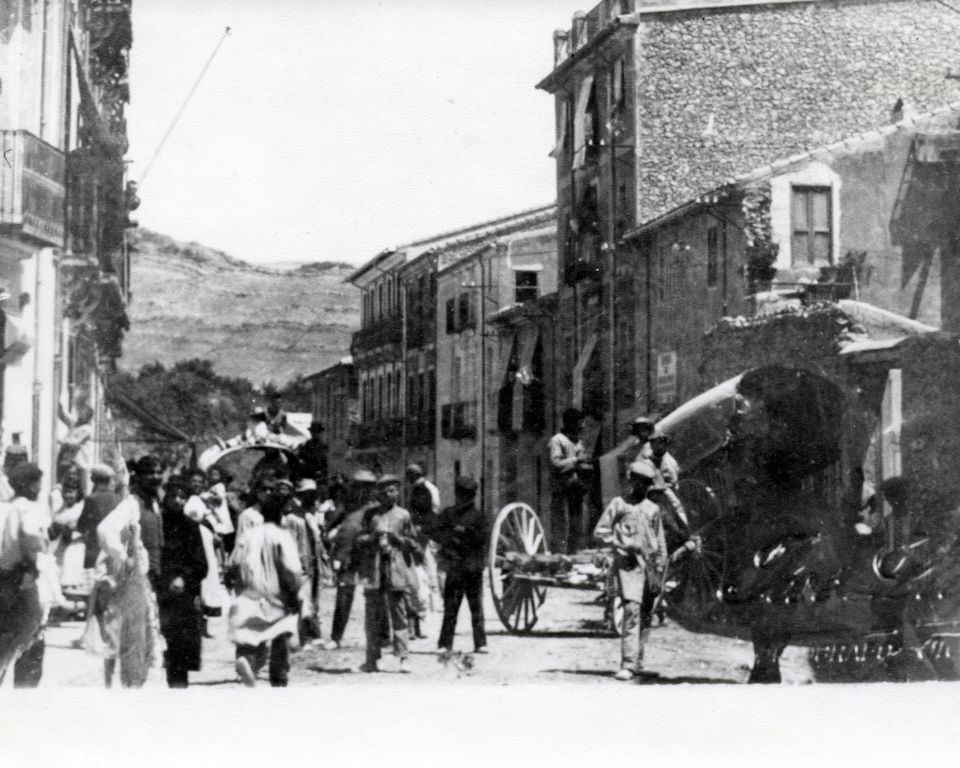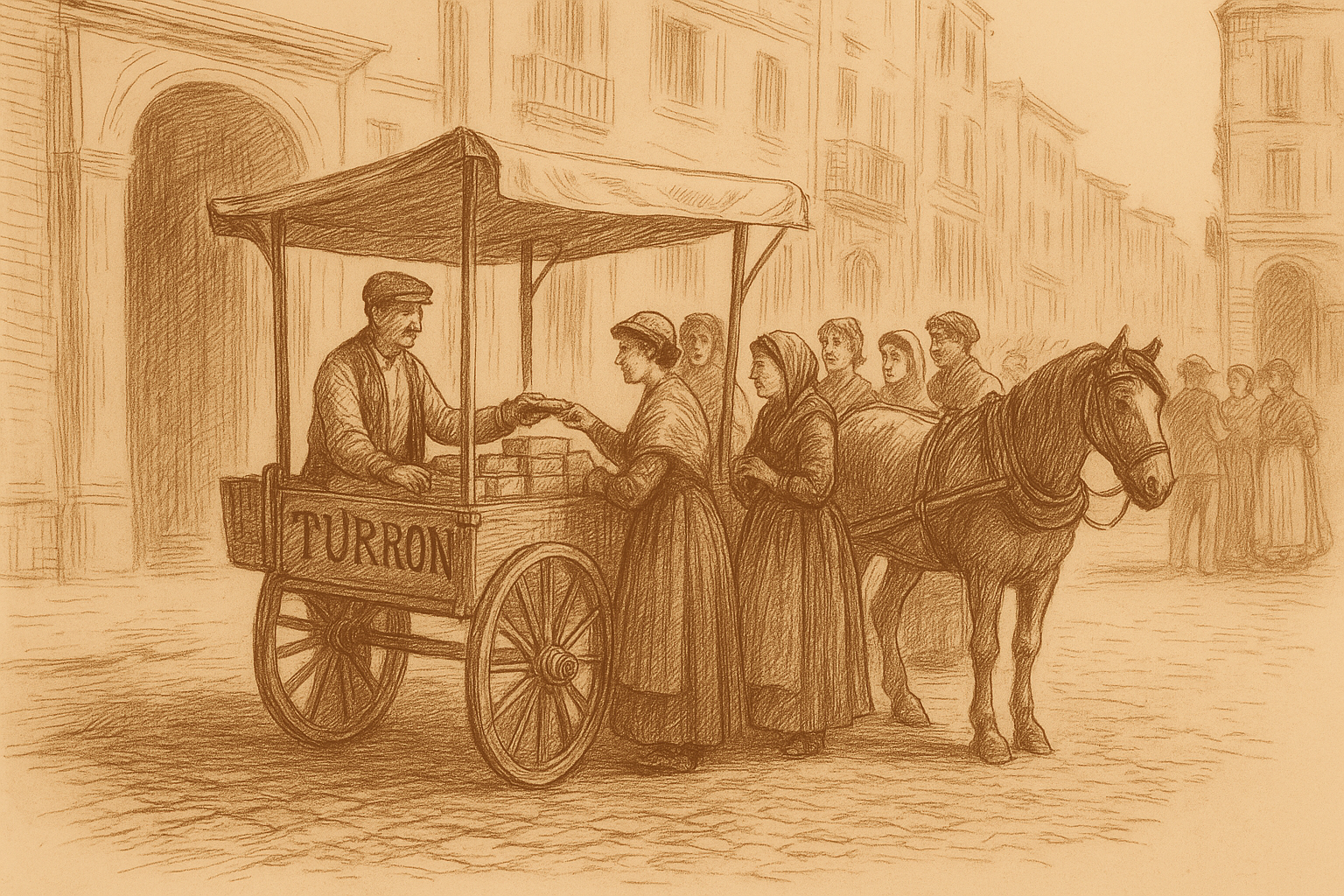History of turrón
Turrón and Mazapán are two products made from almonds and sugars whose origin dates back centuries and centuries ago. It is presumed that already in the Greek era a paste composed of nuts (mainly almonds) and honeys, which served Greek athletes as an energy product to participate in the Olympics.
More recently, historical data have been found to ensure that nougat already existed in the village of Sexona (present-day Jijona) in the 16th century. The Arabs were the ones who introduced this sweet, and so recognized by the Regulatory Council of Protected Geographical Indications of the Nougat of Jijona and Alicante. However, there are different versions about the origin of nougat. Sources claim that the nougat arose after a contest proposed by the Arabs in which it was about seeking a nutritious food that was kept in good condition for a long stay and that was easily transported by their armies without danger of intoxication. Other sources, however, claim that nougat arose thanks to the elaboration by a craftsman from Barcelona, surnamed Turró, who made a food with abundant raw materials from the region that would be an indispensable resource in times of scarcity and famine. The defenders of this version derive from the name of nougat born from the surname of said craftsman. This version, despite its apparent simplicity, is the least supported. The charismatic jijonenco, Fernando Galiana, who devoted many years of his life to these studies, states that the word nougat comes from torrat, which was a mixture of honey and nuts that was cooked directly into the fire to give a consistent and easy-to-manage dough. There are more versions, but these are the most expanded.

Calle de La Industria at the beginning of the 20th century. Photo by José Llopis
Turrón and Mazapán are two products made from almonds and sugars whose origin dates back centuries and centuries ago. It is presumed that already in the Greek era a paste composed of nuts (mainly almonds) and honeys, which served Greek athletes as an energy product to participate in the Olympics.
More recently, historical data have been found to ensure that nougat already existed in the village of Sexona (present-day Jijona) in the 16th century. The Arabs were the ones who introduced this sweet, and so recognized by the Regulatory Council of Protected Geographical Indications of the Nougat of Jijona and Alicante. However, there are different versions about the origin of nougat. Sources claim that the nougat arose after a contest proposed by the Arabs in which it was about seeking a nutritious food that was kept in good condition for a long stay and that was easily transported by their armies without danger of intoxication. Other sources, however, claim that nougat arose thanks to the elaboration by a craftsman from Barcelona, surnamed Turró, who made a food with abundant raw materials from the region that would be an indispensable resource in times of scarcity and famine. The defenders of this version derive from the name of nougat born from the surname of said craftsman. This version, despite its apparent simplicity, is the least supported. The charismatic jijonenco, Fernando Galiana, who devoted many years of his life to these studies, states that the word nougat comes from torrat, which was a mixture of honey and nuts that was cooked directly into the fire to give a consistent and easy-to-manage dough. There are more versions, but these are the most expanded.

Calle de La Industria at the beginning of the 20th century. Photo by José Llopis
The Legend

And so the legend ends... There are other cities such as Toledo and Agramunt where there are also historical references to the elaboration of nougat and marzipan, although Jijona stands as the city of nougat and historically documents its origin. It is well known that nougat consumption is practically reduced to Christmas dates. Regarding this topic, it is worth highlighting a book by Francisco Martínez Montiño entitled "CONDUCHOS DE NAVIDAD", dating from 1584. Its author was the head of kitchens of Philip II and it already reflected the custom of eating nougat in the Christmas dates as early as the sixteenth century.
Most nougat factories focus their largest production in the months leading up to Christmas (usually from September to December) to be able to supply Spain and the rest of the world (Japan, USA, Cuba, Venezuela, Argentina, Costa Rica, France, Germany, etc.) from the longed-for and expected Christmas sweet. The rest of the year many of them close their doors while waiting for the start of the new campaign.
Among the main problems presented by this sector are market stagnation and lack of labour. It should be noted that in the early 1990s the sector suffered a serious crisis that led to the bankruptcy of large leading companies and put many others in trouble, with the consequent dismissal of hundreds of workers and the destabilization of that economy. The situation has now improved and the figures indicate an increase in production and resources. This palpable recovery of the turronero world has relieved hundreds of Jijonenic families whose livelihood depended exclusively on the nougat season.
Sale of nougat on the portals of houses
















































